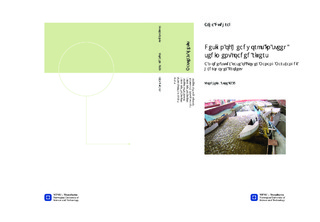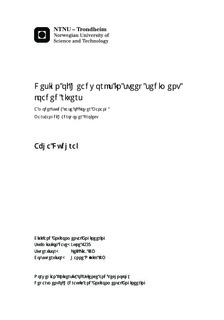| dc.description.abstract | Headworks design in steep, sediment loaded rivers is challenging. Technical challenges related to the functionalities of the headworks area have been studied for the case of Lower Manang Marsyangdi (LMM) Hydropower Project (HPP), which is under design phase in Nepal. The Physical Hydraulic Model (PHM) study conducted at Hydro Lab focuses on intake hydraulics, sediment handling and trash removal along the intake. Experience from the physical model study of the LMM headworks has shown that the passage of sediments and bed control during flood periods are the major challenges in this hydropower project. Design of an optimal bed load handling component and the settling basin are very important to handle sediments without affecting the regularity in power generation.Velocity measurements were conducted at several cross-sections along the settling basins to evaluate the hydraulics. Turbulent Kinetic Energy (TKE) was calculated from the velocity measurements to assess the effect of secondary currents. The study has further focused on the concept of numerical modeling to replicate the hydraulics in the existing headworks model of LMM HPP. A Three-dimensional (3D) CFD-program, STAR CCM+, has been used to conduct the numerical model study of the intake hydraulics of LMM headworks. Through dye tests and measurements on the PHM it has been shown that final conceptual design, which is based on modifications conducted on the initial design, has an improved hydraulics along the intake. Vortices/eddies in front of the intakes and along the settling basins have been reduced and a uniform, symmetrical flow with the desired velocity of less than 1.00 m/s prototype value has been achieved along the settling basins. Further evaluation of TKE has shown significant decrease of turbulence level along the settling basins. Use of numerical model has to a large extent been successfully able to replicate the hydraulics in the modeled headworks of LMM HPP. The velocity range is comparable to the measured values in the laboratory. However, secondary currents and, thereby, the TKE values have not been reproduced properly in the numerical model. TKE for the first cross-section close to the inlet of the basin is similar but no significant trend can be observed between the other cross-sections. Numerical model requires boundary conditions determined from the PHM and results need to be validated against laboratory measurements to ensure their accuracy. Thus, it is recommended for numerical model studies to be used in combinations with PHM study. Numerical model requires an initial validation by comparing simulated flows to measured flows from the laboratory. The validated numerical model can then be used to predict further effects of modification in the headworks design and to optimize the conceptual design. | nb_NO |

